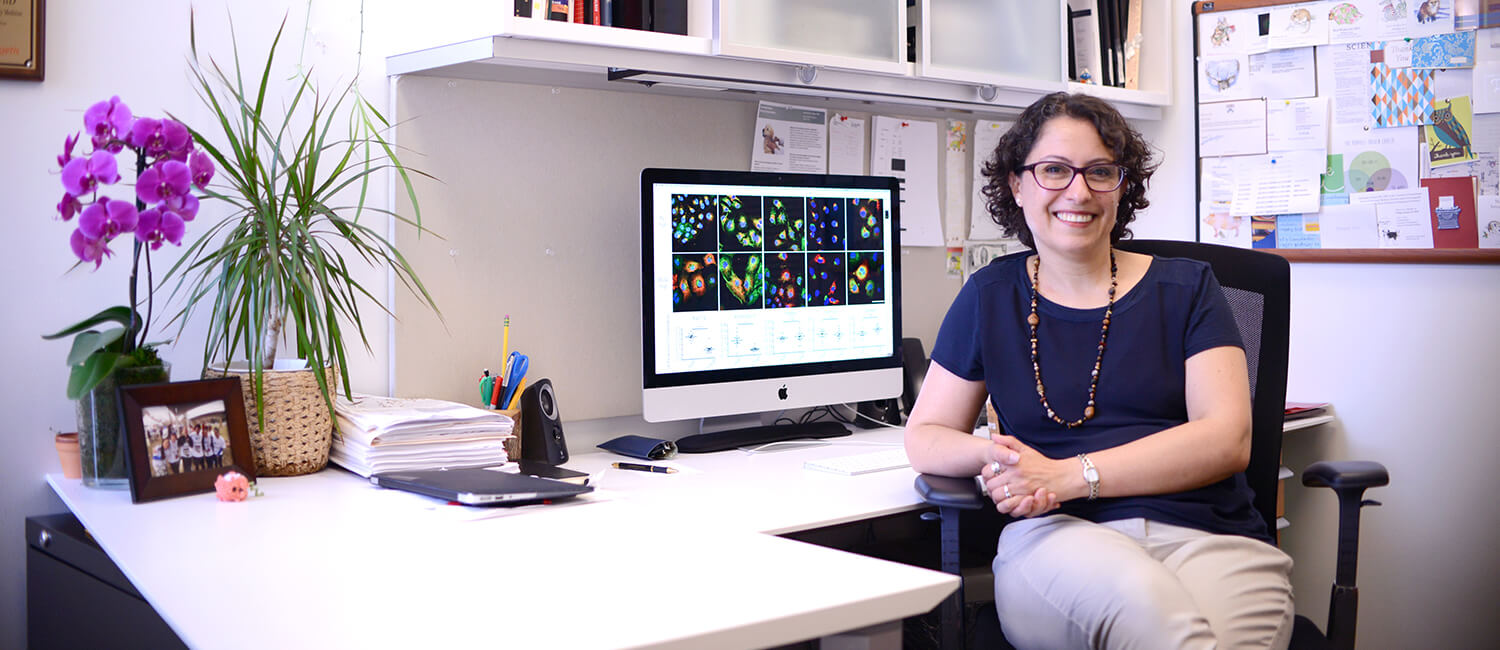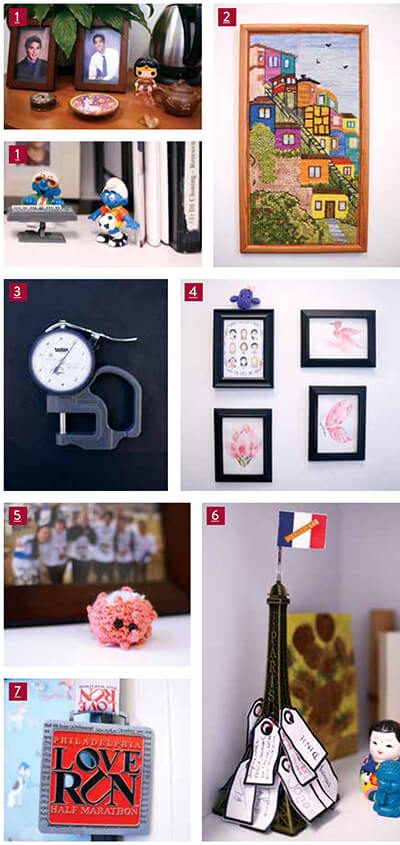 On sunny days, light floods the glass-walled López Lab, catching on plants, people, and benches and benches of equipment. Less visible, even in the brightest sunlight, are the many nanoscopic viruses at the center of the lab’s work. But they’re there, growing in vitro by the millions.
On sunny days, light floods the glass-walled López Lab, catching on plants, people, and benches and benches of equipment. Less visible, even in the brightest sunlight, are the many nanoscopic viruses at the center of the lab’s work. But they’re there, growing in vitro by the millions.
Led by Dr. Carolina López, Associate Professor of Microbiology and Immunology, the López Lab studies the interplay between viruses and the immune system that protects us from infections. López has identified defective viral genomes that are generated during the standard virus replication process, and she is especially interested in the role these agents play in viral infections.
It’s an area of study she didn’t foresee early in her career. “I trained in biochemistry and immunology,” she said. “While an undergrad, I studied contact dermatitis to urushiol, the compound in poison ivy that causes allergic reactions. I became intrigued by viruses and their resourcefulness. In grad school, I joined an antiviral immunology lab and gravitated toward viruses. Today, I still do some immunology but am more involved in virology.”
 1 Wonder Woman and Smurfs
1 Wonder Woman and Smurfs
She’s a gift from my sons. Wonder Woman is very wonderful! I sometimes wish I had superpowers—super patience would be a great power to have. We always called our kids, who are in college now, our little Smurfs—one of the boys played piano and one played soccer when they were little.
2 Needlepoint Hill in Valparaíso, Chile
A friend of my mother does beautiful needlepoint and made this hill in Valparaiso. I grew up in a small city in Chile called Antofagasta—it was in the desert but near the sea. My husband and I came to the U.S. in 1996 for our PhDs, and this lovely piece reminds me of where I’m from.
3 High Precision Caliper
My husband gave this to me when I received tenure. I used an instrument like this all the time in the first lab that I joined to measure inflammatory reactions in mouse ears. The tool is very precise and measures at the millimeter level. I used it so much at one point I couldn’t use my right hand for about six months. The equipment is cool and really marks the first real science I did. Today, I do more virology work and don’t use this type of tool, so this is part of my history.
4 Art Collection (and Gifts from Students)
The group illustration is from an undergrad Penn student who worked in my lab. It’s of all the people in the lab at the time she was here, and she really captured everyone’s characters. The other three are from another undergraduate who completed a three-year PREP program. He painted one for each year he was here. It always amazes me when students create things that show another side of them.
5 “Defective” Virus
A young virologist colleague loves to knit and hands around these during conferences and meetings. He made me this virus. It’s perfect, because it’s defective and we work with defective viruses. Initially, he made it defective by making it small, but eventually the knitting popped and unraveled at the top, making it a truly defective knit virus.
6 Secret Santa Gift
I was on sabbatical last year in Paris as a Fulbright Scholar at the Institut Pasteur, where I studied mathematical modeling. The group I studied with uses math to model the dynamics of infectious diseases. This is something we haven’t really done in my lab, but the research is moving in that direction. It was fascinating to see the different approach. So many times, I’d marvel at the difference—I’d talk about how viruses infect a cell, and they’d think of a possible equation for it. The Eiffel Tower was the present from my secret Santa. It has the name of everyone in that lab.
7 Love Run Philadelphia Medal
I raced with my lab a few years ago. We had two teams and ran the relay 10K course. There were a range of running levels among us, and we had to work together as team. I don’t think that I could convince everyone to do it again, but it was a fun experience and great team activity.